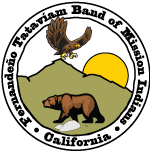August 28, 2020

The American Indian Studies Program supports the application for federal recognition by the Fernandeño Tataviam Band of Mission Indians. That application is currently being considered by the Department of the Interior, and AIS Director Scott Andrews has submitted a letter in support of it, along with other individuals and organizations in the region, including the Los Angeles Community College District.
"There are several criteria a tribe must meet to gain federal recognition, and in my opinion the Tataviam fulfill all of them," Andrews said. In fact, he said, the Tataviam signed a treaty with the U.S. government in the 1850s, as did several other California tribes. Those treaties ultimately were not ratified, but that was from bad-faith actions by state and federal officials who did not want the sovereignty of those tribes recognized. Congress was not given the opportunity to ratify those treaties, as it should have been, he said. "Recognizing the Tataviam now would help correct that injustice from long ago."
A brief video from the Tataviam about their efforts for federal recognition can be viewed here: https://www.facebook.com/tataviam/videos/744976849613253.
The CSUN campus occupies land originally belonging to ancestors of the Tataviam, and that occupancy was formally recognized this year when President Dianne Harrison made a land acknowledgement part of the CSUN Convocation:
CSUN recognizes and acknowledges the Sesevitam, the first people of this ancestral and unceded territory of Sesevenga that is now occupied by our institution; and it honors their elders, past and present, and the Sesevitam descendants who are citizens of the Fernandeño Tataviam Band of Mission Indians. We recognize that the Sesevitam are still here and we are committed to lifting up their stories, culture, and community.
Sesevenga was the closest village site to the CSUN campus, and the Sesevitam were the people of that village. Their ancestors would later join others to create the larger community now called the Tataviam.
Information about the history of the Tataviam and their current health, education, and cultural programming is available at https://www.tataviam-nsn.us/.
